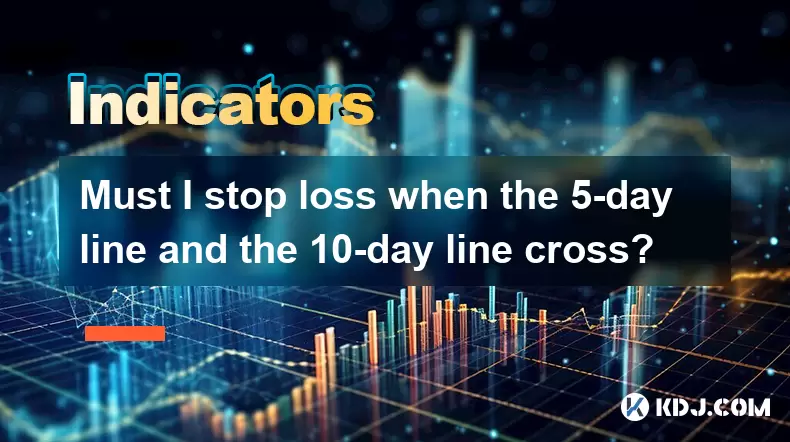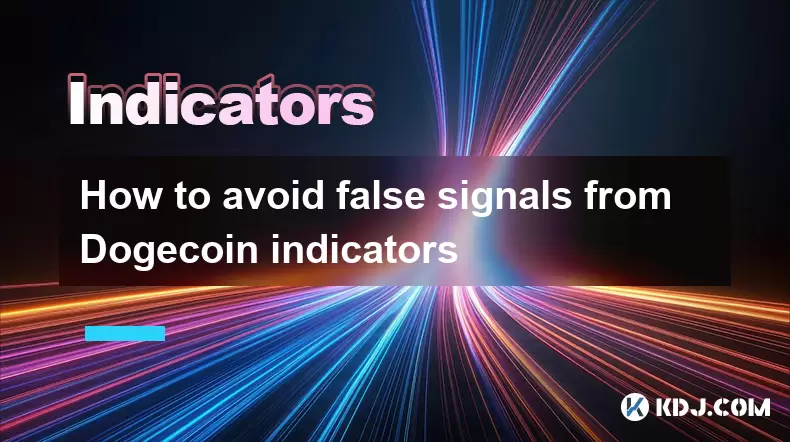-
 Bitcoin
Bitcoin $108,250.0992
0.11% -
 Ethereum
Ethereum $2,515.9404
0.03% -
 Tether USDt
Tether USDt $1.0003
0.00% -
 XRP
XRP $2.2166
-0.19% -
 BNB
BNB $656.5904
0.29% -
 Solana
Solana $147.4122
-0.58% -
 USDC
USDC $1.0000
-0.01% -
 TRON
TRON $0.2830
0.06% -
 Dogecoin
Dogecoin $0.1641
0.27% -
 Cardano
Cardano $0.5739
-0.19% -
 Hyperliquid
Hyperliquid $39.1463
-0.11% -
 Sui
Sui $2.8882
-0.02% -
 Bitcoin Cash
Bitcoin Cash $487.6428
0.31% -
 Chainlink
Chainlink $13.2097
0.07% -
 UNUS SED LEO
UNUS SED LEO $9.0308
0.10% -
 Avalanche
Avalanche $17.8608
0.13% -
 Stellar
Stellar $0.2379
-0.06% -
 Toncoin
Toncoin $2.7400
-0.39% -
 Shiba Inu
Shiba Inu $0.0...01144
-0.36% -
 Litecoin
Litecoin $87.5467
0.66% -
 Hedera
Hedera $0.1538
0.22% -
 Monero
Monero $315.5479
0.36% -
 Dai
Dai $1.0000
0.00% -
 Polkadot
Polkadot $3.3523
-0.71% -
 Ethena USDe
Ethena USDe $1.0003
0.01% -
 Bitget Token
Bitget Token $4.3960
-1.03% -
 Uniswap
Uniswap $7.2663
4.19% -
 Aave
Aave $272.8619
2.04% -
 Pepe
Pepe $0.0...09676
-0.18% -
 Pi
Pi $0.4586
-2.87%
Must I stop loss when the 5-day line and the 10-day line cross?
When the 5-day MA crosses the 10-day MA, consider adjusting your stop loss based on volume, market context, and confirmation from other indicators like RSI or candlestick patterns.
Jul 02, 2025 at 05:49 pm

Understanding the 5-Day and 10-Day Moving Averages
The 5-day moving average (MA) and 10-day moving average are among the most commonly used technical indicators in cryptocurrency trading. These lines represent the average closing prices of an asset over the last 5 or 10 days, respectively. When these two lines intersect, it's referred to as a "crossover," which can signal potential trend reversals. Traders often use this signal to make decisions about entering or exiting positions.
A golden cross occurs when the 5-day MA crosses above the 10-day MA, suggesting a bullish trend may be emerging. Conversely, a death cross happens when the 5-day MA crosses below the 10-day MA, indicating a possible bearish shift. While these crossovers provide insights into market momentum, they are not foolproof and should be analyzed alongside other tools.
What Does a Crossover Mean for Stop Loss Placement?
When the 5-day line and 10-day line cross, traders may question whether they should adjust their stop loss orders. A stop loss is a risk management tool designed to limit losses on a trade by automatically closing a position once a specific price level is reached. The decision to place or modify a stop loss during a crossover depends on several factors:
- Market context: Is the crossover occurring after a strong uptrend or downtrend?
- Volume levels: High volume during a crossover can validate its significance.
- Support and resistance levels: These can influence where a stop loss should be placed.
If you're holding a long position and the 5-day MA crosses below the 10-day MA, some traders interpret this as a warning sign. In such cases, adjusting your stop loss higher or tighter might help protect profits or minimize risk exposure.
How to Evaluate Market Conditions Around the Crossover
Before deciding to set or move a stop loss, it’s essential to evaluate the broader market conditions. Cryptocurrency markets are highly volatile, and relying solely on moving average crossovers can lead to premature exits or missed opportunities. Consider the following:
- Price action around the crossover: Is there a strong rejection at key support or resistance levels?
- Relative Strength Index (RSI): Is the asset overbought or oversold?
- Volume confirmation: Has volume spiked during the crossover, signaling strong sentiment?
For instance, if the 5-day MA crosses below the 10-day MA, but the RSI remains above 50, it could indicate that the bearish signal isn't fully confirmed. In such scenarios, placing a stop loss too early might result in being stopped out before a potential reversal.
Strategic Stop Loss Adjustments During Crossovers
If you're considering adjusting your stop loss when the 5-day and 10-day MAs cross, here are some strategic steps to follow:
- Identify the direction of the crossover: Determine whether it's a golden or death cross.
- Analyze recent candlestick patterns: Look for engulfing candles or doji formations that might confirm trend strength.
- Check nearby support/resistance zones: Place your stop loss just beyond critical levels to avoid getting shaken out prematurely.
- Consider volatility using Bollinger Bands or ATR (Average True Range): This helps in setting realistic stop distances.
- Evaluate your trade setup: If you entered based on momentum, a crossover may be an early exit point; if you're a swing trader, it may not be as relevant.
In fast-moving crypto markets, placing a trailing stop loss can be more effective than a fixed one. This allows you to lock in gains while giving the trade room to breathe.
Practical Example: Applying Stop Loss in Real Trading Scenarios
Let’s assume you’re long on Bitcoin (BTC) at $30,000, with a target of $32,000. The 5-day MA crosses below the 10-day MA, signaling a possible pullback. Here's how you might manage your stop loss:
- You initially set your stop loss at $29,000.
- After the crossover, you notice weak volume and no significant breakdown below $29,500.
- Instead of keeping the stop loss at $29,000, you trail it up to $29,700 to protect unrealized gains.
- Over the next few days, the price stabilizes above $29,800, and you continue trailing the stop loss accordingly.
This example shows that instead of blindly reacting to the crossover, you can adapt your risk management strategy based on evolving price behavior and volatility.
Frequently Asked Questions
Q: Can I rely solely on the 5-day and 10-day MA crossover for stop loss decisions?
No, you shouldn’t rely solely on this indicator. It works best when combined with volume analysis, candlestick patterns, and support/resistance levels to improve accuracy.
Q: Should I always move my stop loss immediately after a crossover?
Not necessarily. The timing depends on how strong the crossover signal appears. Wait for additional confirmation from other indicators or chart patterns before making adjustments.
Q: What time frame should I use to monitor the 5-day and 10-day MAs?
Most traders use daily charts for swing trading, but intraday traders might look at shorter time frames like 4-hour or 1-hour charts to catch quicker moves.
Q: Are crossovers more reliable in trending or ranging markets?
Crossovers tend to perform better in trending markets. In sideways or choppy markets, they can produce false signals, so caution is advised.
Disclaimer:info@kdj.com
The information provided is not trading advice. kdj.com does not assume any responsibility for any investments made based on the information provided in this article. Cryptocurrencies are highly volatile and it is highly recommended that you invest with caution after thorough research!
If you believe that the content used on this website infringes your copyright, please contact us immediately (info@kdj.com) and we will delete it promptly.
- BNB, Nano Labs, and Binance: A $160 Million Crypto Play
- 2025-07-06 12:30:13
- Bitcoin, Taxing, and Fund Managers: Navigating the Crypto Maze in NYC
- 2025-07-06 12:50:14
- Debt Ceiling, Trump, and Bitcoin's Allure: A New York Minute on Fiscal Policy
- 2025-07-06 12:30:13
- Bitcoin, Ethereum, and Crypto Gains: What's Hot in the NYC Crypto Scene?
- 2025-07-06 13:10:15
- Zerion: Real-Time Portfolio Tracking Revolutionized
- 2025-07-06 13:10:15
- Bitcoin Transfer, Market Dip, and Speculation: Decoding the Crypto Whale's Moves
- 2025-07-06 12:35:13
Related knowledge

How to spot manipulation on the Dogecoin chart
Jul 06,2025 at 12:35pm
Understanding the Basics of Chart ManipulationChart manipulation in the cryptocurrency space, particularly with Dogecoin, refers to artificial price movements caused by coordinated trading activities rather than genuine market demand. These manipulations are often executed by large holders (commonly known as whales) or organized groups aiming to mislead...

What is the significance of a Dogecoin engulfing candle pattern
Jul 06,2025 at 06:36am
Understanding the Engulfing Candle Pattern in CryptocurrencyThe engulfing candle pattern is a significant technical analysis tool used by traders to identify potential trend reversals in financial markets, including cryptocurrencies like Dogecoin. This pattern typically consists of two candles: the first one is relatively small and indicates the current...

Dogecoin monthly chart analysis for long term investors
Jul 06,2025 at 10:08am
Understanding the Dogecoin Monthly ChartFor long-term investors, analyzing the monthly chart of Dogecoin (DOGE) provides a macro view of its price behavior over extended periods. The monthly chart captures major trends, key resistance and support levels, and potential reversal zones that are crucial for strategic investment planning. Unlike daily or hou...

How to manage risk using ATR on Dogecoin
Jul 06,2025 at 02:35am
Understanding ATR in Cryptocurrency TradingThe Average True Range (ATR) is a technical indicator used to measure market volatility. Originally developed for commodities, it has found widespread use in cryptocurrency trading due to the high volatility inherent in digital assets like Dogecoin (DOGE). The ATR calculates the average range of price movement ...

How to avoid false signals from Dogecoin indicators
Jul 06,2025 at 06:49am
Understanding Dogecoin Indicators and Their LimitationsDogecoin indicators are tools used by traders to analyze price movements and make informed decisions. These include moving averages, Relative Strength Index (RSI), MACD, and volume-based metrics. However, these tools can sometimes generate false signals, especially in highly volatile markets like Do...

Dogecoin Donchian Channels strategy
Jul 06,2025 at 02:43am
What Are Donchian Channels?Donchian Channels are a technical analysis tool used to identify potential breakouts, trends, and volatility in financial markets. They consist of three lines: the upper band, which marks the highest high over a specific period; the lower band, which reflects the lowest low over the same period; and the middle line, typically ...

How to spot manipulation on the Dogecoin chart
Jul 06,2025 at 12:35pm
Understanding the Basics of Chart ManipulationChart manipulation in the cryptocurrency space, particularly with Dogecoin, refers to artificial price movements caused by coordinated trading activities rather than genuine market demand. These manipulations are often executed by large holders (commonly known as whales) or organized groups aiming to mislead...

What is the significance of a Dogecoin engulfing candle pattern
Jul 06,2025 at 06:36am
Understanding the Engulfing Candle Pattern in CryptocurrencyThe engulfing candle pattern is a significant technical analysis tool used by traders to identify potential trend reversals in financial markets, including cryptocurrencies like Dogecoin. This pattern typically consists of two candles: the first one is relatively small and indicates the current...

Dogecoin monthly chart analysis for long term investors
Jul 06,2025 at 10:08am
Understanding the Dogecoin Monthly ChartFor long-term investors, analyzing the monthly chart of Dogecoin (DOGE) provides a macro view of its price behavior over extended periods. The monthly chart captures major trends, key resistance and support levels, and potential reversal zones that are crucial for strategic investment planning. Unlike daily or hou...

How to manage risk using ATR on Dogecoin
Jul 06,2025 at 02:35am
Understanding ATR in Cryptocurrency TradingThe Average True Range (ATR) is a technical indicator used to measure market volatility. Originally developed for commodities, it has found widespread use in cryptocurrency trading due to the high volatility inherent in digital assets like Dogecoin (DOGE). The ATR calculates the average range of price movement ...

How to avoid false signals from Dogecoin indicators
Jul 06,2025 at 06:49am
Understanding Dogecoin Indicators and Their LimitationsDogecoin indicators are tools used by traders to analyze price movements and make informed decisions. These include moving averages, Relative Strength Index (RSI), MACD, and volume-based metrics. However, these tools can sometimes generate false signals, especially in highly volatile markets like Do...

Dogecoin Donchian Channels strategy
Jul 06,2025 at 02:43am
What Are Donchian Channels?Donchian Channels are a technical analysis tool used to identify potential breakouts, trends, and volatility in financial markets. They consist of three lines: the upper band, which marks the highest high over a specific period; the lower band, which reflects the lowest low over the same period; and the middle line, typically ...
See all articles

























































































